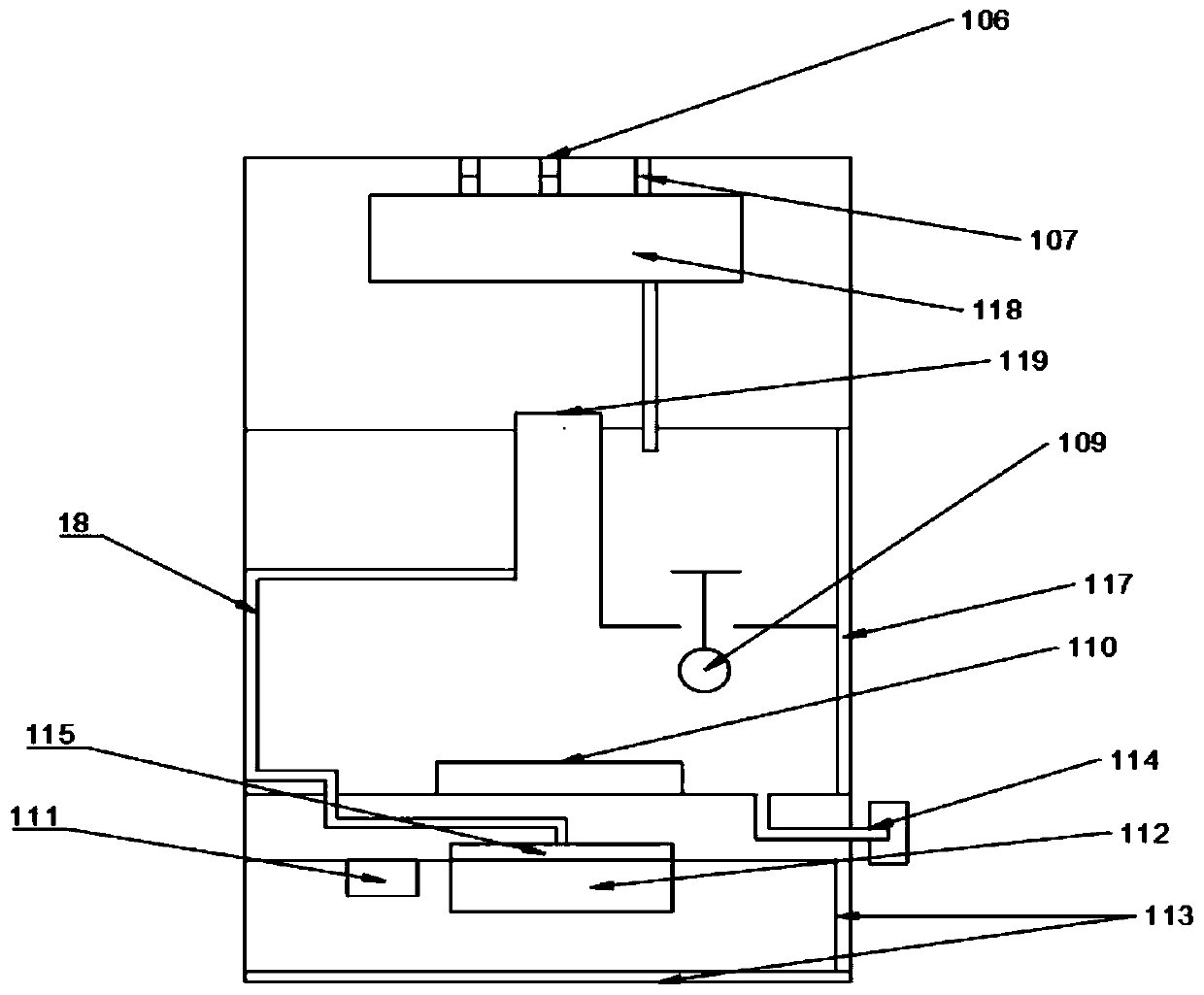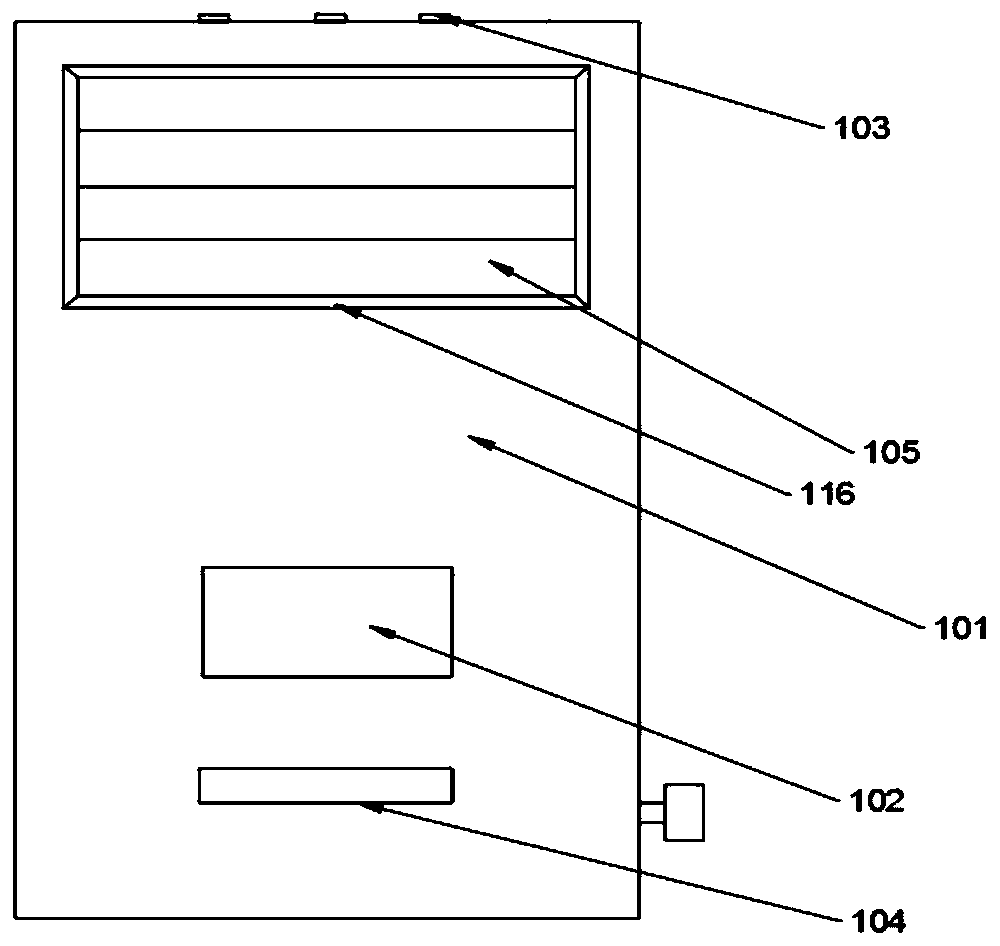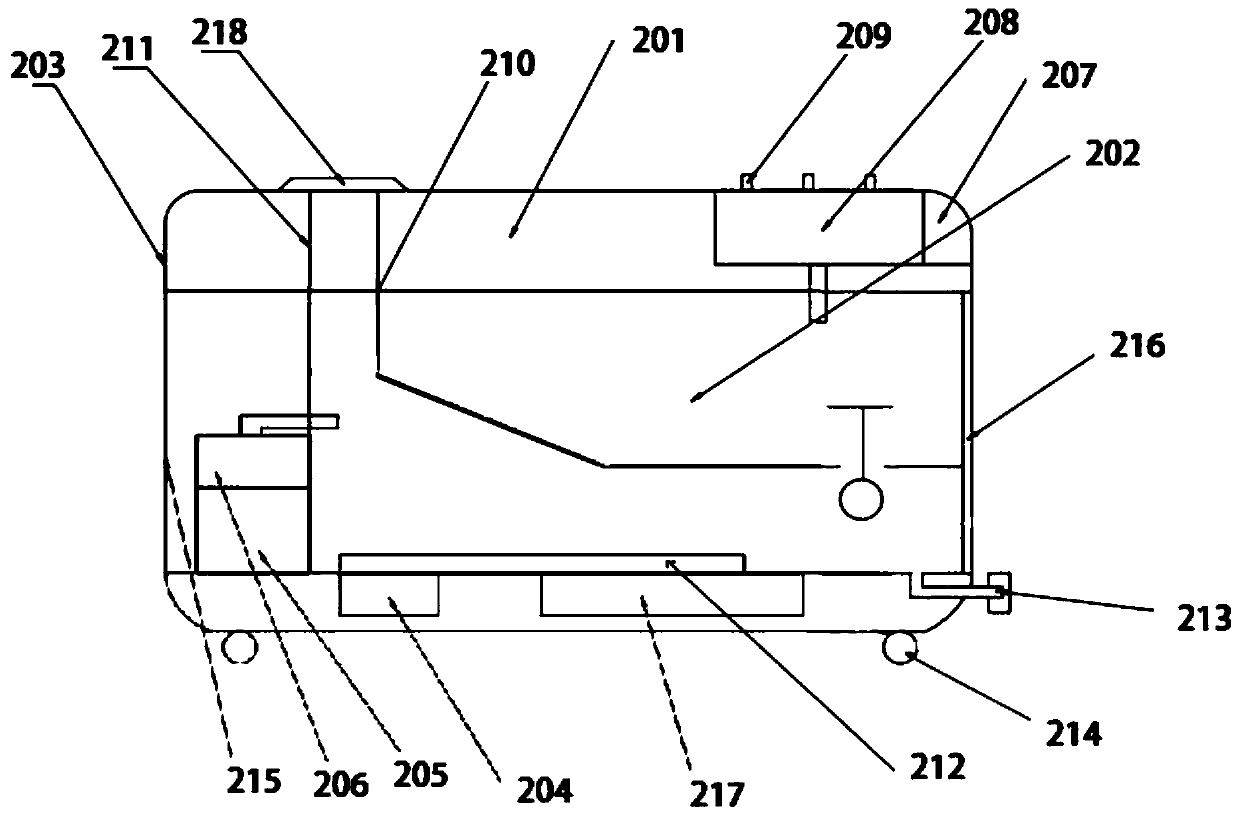Integrated technology and method for dynamically disinfecting air in aggregated place by using weakly acidic hypochlorous acid disinfectant
An aerodynamic, hypochlorous acid technology, applied in disinfection, botanical equipment and methods, preservation of human or animal bodies, etc., can solve the problems of dynamic continuous disinfection, low sterilization efficiency, toxic human body, etc., and achieve continuous disinfection effect. The effect of long time, fast diffusion and long floating time
- Summary
- Abstract
- Description
- Claims
- Application Information
AI Technical Summary
Problems solved by technology
Method used
Image
Examples
Embodiment 1
[0037] Corrosion of Weak Acid Hypochlorous Acid Disinfectant to Metal
[0038] According to the experimental method of "GBT 38498-2020 Disinfectant Metal Corrosion Evaluation Method", soak stainless steel, carbon steel, copper, aluminum and other metal sheets in hypochlorous acid disinfectant A with a concentration of 500ppm and add 10mg / L Soak in hypochlorous acid disinfectant B containing chloride, phosphate, nitrate, acetate or tartrate for 72 hours, change the solution once a day, rinse with clean water before and after soaking, and dry at 50°C for 1 hour. Weigh (accurate to 0.1 mg), calculate the corrosion rate, and the test results are shown in Table 1. Therefore, hypochlorous acid solution B added with 0.1mmol / L chloride, phosphate, nitrate, acetate or tartrate can effectively reduce the corrosion of hypochlorous acid to stainless steel, carbon steel, copper, aluminum and other metals .
[0039] Metal corrosion of table 1 hypochlorous acid disinfectant
[0040]
Embodiment 2
[0042] Sterilization ability of weak acid hypochlorous acid disinfectant
[0043] According to "GB / T 38504-2020 Spray Disinfection Effect Evaluation Method", Appendix A "Laboratory Experiment Method for Surface Spray Disinfection Effect" uses 50ppm hypochlorous acid solution with a pH of 5.5 to treat Streptococcus, Bacillus subtilis, Candida, Aspergillus niger, Escherichia coli, Staphylococcus aureus, methicillin-resistant Staphylococcus aureus, Salmonella, and Pseudomonas aeruginosa were sprayed, and the number of colonies after contacting with hypochlorous acid solution for 1 minute, 3 minutes, and 5 minutes were detected (See Table 2 for details).
[0044] Bactericidal effect of table 2.50ppm hypochlorous acid disinfectant
[0045]
[0046] It can be seen that the bactericidal spectrum of hypochlorous acid solution is very wide, and it has a wide range of bactericidal capabilities against all microorganisms and viruses such as various bacteria, molds, yeasts, etc., espe...
Embodiment 3
[0048] Influence of Ultrasonic Parameters of Aerosol Generator on Concentration of Weak Acid Hypochlorous Acid
[0049] Using 35KHz, 40KHz, 53KHz, 1.7MHz to ultrasonically treat hypochlorous acid solutions with different concentrations, and detect the concentration changes (see Table 3 for specific results).
[0050] Table 3. The effect of different ultrasonic frequencies on the concentration of hypochlorous acid
[0051]
[0052]
[0053] Ultrasound has little effect on the stability of weakly acidic hypochlorous acid water. Within 3 hours of ultrasound at 35KHz~1.7MHz, the concentration loss of hypochlorous acid solution is less than 10%.
PUM
 Login to View More
Login to View More Abstract
Description
Claims
Application Information
 Login to View More
Login to View More - R&D
- Intellectual Property
- Life Sciences
- Materials
- Tech Scout
- Unparalleled Data Quality
- Higher Quality Content
- 60% Fewer Hallucinations
Browse by: Latest US Patents, China's latest patents, Technical Efficacy Thesaurus, Application Domain, Technology Topic, Popular Technical Reports.
© 2025 PatSnap. All rights reserved.Legal|Privacy policy|Modern Slavery Act Transparency Statement|Sitemap|About US| Contact US: help@patsnap.com



